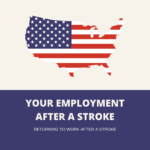Why Black Americans Face Higher Stroke Risks

This crisis impacts millions worldwide, though some communities encounter far greater obstacles. Witnessing its harsh effects firsthand inspires a strong desire to bring attention to this issue. Consequences ripple beyond individuals—families, neighborhoods, and future generations share its weight. Certain groups face elevated risks, leading to more severe outcomes. This discussion explores reasons behind such disparities, considers meaningful actions, and outlines practical steps to limit its impact.
Effects from a stroke vary based on which brain region is impacted and how swiftly treatment begins. Usual signs may include sudden loss of feeling or strength in the face, arm, or leg—often limited to one side—along with disorientation, speech trouble, visual changes, imbalance, spinning sensation, or an intense headache. Spotting these warnings early and taking prompt action can determine survival and recovery outcome.
Uneven Risk Factors They Encounter
When it comes to this health condition, certain individuals face a unique and concerning reality. According to Centers for Disease Control and Prevention (CDC), they are 50% more likely to experience it compared to others. Not only is the risk higher, but it also tends to occur at younger ages and lead to more severe outcomes.
Here are some sobering statistics:
They are twice as likely to die from this condition as their counterparts.
Many face persistent physical challenges that make maintaining employment, managing daily tasks, or engaging in favorite activities more difficult. These ongoing struggles can involve mobility, speech, memory, or coordination issues—each affecting independence and overall quality of life. Consequently, numerous individuals require additional assistance to manage everyday chores, stay socially connected, or remain active within their communities.
Conditions like excess weight and chronic illnesses appear often among individuals in this group. Such ongoing strains raise risk for severe medical episodes by a wide margin.
Such disparities go far beyond simple numbers—they represent daily hardship for real individuals and families dealing with greater challenges and limited resources. Each figure tells a story of disrupted lives, lost opportunities, and futures reshaped by circumstances others may never encounter. This imbalance reaches into neighborhoods, spans generations, and touches every part of society, creating an urgent need to confront root causes and move toward meaningful, lasting change.
Why Are They at Greater Risk?
Reasons behind a higher chance of facing severe outcomes in this group arise from many influences. It isn’t about a single factor—it’s a mix of inherited traits, environmental surroundings, and daily life situations. These overlapping elements often create a demanding journey. Let’s explore it in more detail:
1. High Blood Pressure (Hypertension)
High blood pressure is the leading risk factor for this condition, and it’s incredibly common in this community. Nearly 55% of adults in the U.S. from this group have hypertension, compared to about 46% of white adults. What’s more, they often develop high blood pressure at a younger age, and it tends to be more severe.
There’s a genetic component to this—research suggests that Black individuals may be more sensitive to salt, which can contribute to higher blood pressure. However, lifestyle factors like diet, physical activity, and stress also play a significant role.
2. Diabetes
Challenges tied to how sugar is managed within a person’s system are especially common in certain communities, where individuals face this condition at much higher rates—some studies indicate up to 60% more than other groups. When not managed with care over an extended period, it can cause major harm, disrupting how tissues receive nourishment and how vital organs continue operating efficiently. Such internal strain rarely appears all at once; it develops slowly, quietly interfering with essential functions like vision and kidney performance.
Maintaining stability often calls for a consistent daily rhythm. This could mean taking prescribed medicine on schedule, choosing meals free from refined sugar or heavily processed items, staying active through movement, and keeping an eye on key readings such as sugar levels. Yet, following such a pattern can prove challenging for many individuals.
A major challenge arises from finding solid guidance. Many regions lack nearby professionals offering steady checkups or advice. For many individuals, even when some form of service is available, costs for visits, prescriptions, or nutritious food can feel far out of reach. Added to all this, large amounts of misleading or unclear online info make it easy for individuals to slip past any kind of notice.
This isn’t about a lack of willpower. It’s about real-world limitations—long bus rides just to get a consultation, food stores with more chips than fresh produce, and everyday financial pressure that forces folks to choose what they can afford, not always what they need. Over time, all of these factors combine to make managing this condition much harder than it should be.
3. Obesity
Excess weight has emerged as a widespread concern nationwide, with this group showing particularly high numbers. Almost one in every two adults falls into a weight range linked to serious complications affecting heart, joints, and other vital systems. This challenge didn’t arise suddenly—it stems from layers of generational habits, environmental pressures, and economic constraints.
In many households, food traditions go back decades, with recipes rich in flavor but often high in fats, salt, and sugar. These meals carry deep cultural meaning and are often shared during gatherings, celebrations, and family dinners. While they hold sentimental value, repeated intake over time without balance can contribute to long-term physical problems.
On top of that, financial pressure makes it hard for families to choose more nutritious options. Fresh produce and high-quality ingredients can be expensive, especially when compared to processed or fast food. It’s not uncommon for corner stores or chain outlets to be the only places within walking distance, especially in smaller towns or densely packed urban areas. This lack of access to affordable, fresh groceries—sometimes called “food deserts”—means folks are left with fewer good options.
Even for individuals aiming to make different choices, obstacles keep piling up. Long work hours, multiple jobs, or responsibilities toward children and elders leave little time to prepare balanced meals from scratch. Many end up choosing what’s quick and convenient—not always what’s most nourishing.
Add in constant messaging from ads promoting heavily processed snacks and sugary drinks, and breaking that cycle becomes even tougher. Over time, such eating habits, paired with few chances for physical activity or exercise, can result in a slow rise in weight.
This isn’t just about numbers on a scale — it reflects how food, income, surroundings, and culture link together in guiding what people eat and how daily living unfolds. Solving this issue goes far beyond personal decisions — it calls for strong community action, wider access to nourishing foods, and an effort to grasp stories sitting behind raw data.
4. Sickle Cell Disease
This inherited condition, often affecting specific populations more than others, can sharply increase risk of serious complications. Red cells take on abnormal shapes, making smooth passage through blood vessels difficult. As a result, blockages can occur, restricting oxygen delivery to critical organs such as heart, lungs, and brain.
When this happens, it can trigger intense discomfort, damage to organs, or other significant concerns. Young people—especially children and teens—who live with this inherited condition often face even greater challenges, as their growing bodies are more vulnerable to long-term effects.
Because of this, staying on top of regular check-ups, noticing early warning signs, and maintaining consistent follow-ups with trusted professionals becomes essential. Accurate testing and frequent visits can manage conditions more effectively while reducing risk of complications escalating.
5. Social Determinants of Health
Beyond medical concerns, social and financial struggles deeply influence how people experience and manage this issue. Many individuals face higher levels of poverty, fewer nearby providers or affordable services, and long-standing systemic challenges. These factors often lead to more severe outcomes and fewer opportunities to maintain stability in daily life.
For example:
Many Black individuals often face financial barriers or reside in neighborhoods where doctors’ offices and clinics are scarce. This makes it challenging to schedule regular checkups, receive timely medical attention, or stay on top of ongoing issues that require consistent monitoring.
Food Deserts: In many Black neighborhoods, access to fresh, quality food is limited, leading to diets high in salt, sugar, and harmful fats.
Stress: Chronic stress from racism, discrimination, and economic hardship can take a toll on the body, contributing to high blood pressure and other stroke risk factors.
Influence of Culture and Community
Cultural roots often shape eating habits in powerful ways. Soul food, for example, goes beyond a simple meal—it celebrates heritage, family, and identity. Many cherished dishes, though, rely heavily on salt, fats, and sweeteners. Frequent consumption of these ingredients can contribute to high pressure levels and extra weight over time. Honoring culinary traditions remains important, yet updating recipes with lighter, heart-friendly options can make a difference. Simple adjustments—swapping oils, cutting sodium, or adding more vegetables—preserve flavor and tradition while promoting overall wellness.
People in this group have long drawn strength from one another, forming networks of encouragement and perseverance that span generations. Their history shows countless examples of standing together through challenges, and that same spirit fuels progress and positive change today. Churches, local gathering halls, and nonprofit organizations often act as safe spaces where individuals can come together, exchange knowledge, and share strategies for living stronger, more empowered lives. These environments play a key role in spreading valuable information, promoting better daily habits, and connecting individuals with resources to thrive.

What Can Be Done?
Addressing this issue calls for a wide-ranging game plan blending personal responsibility, group-driven encouragement, and shifts at larger institutional levels. Below are several key actions with strong potential to create real impact:
1. Education and Awareness
Accessing accurate information at critical moments can greatly influence outcomes—especially when urgent symptoms appear. Recognizing warning signs, noticing signals indicating something is off, and acting promptly can make a decisive difference between a manageable scenario and lasting consequences.
That’s why prioritizing educational outreach in every part of our communities matters so much. One approach involves neighborhood-based sessions—organized gatherings at churches, schools, rec centers, or local parks—where participants can get real talk, ask questions, and connect with people who know everyday challenges. These sessions go beyond lectures; they create conversations guided by familiar, trusted faces, making information relatable and easy to remember.
Social platforms can play a major role. Quick reels that highlight warning signs or shareable infographics for families spread information rapidly. When used well, smartphones become powerful channels for awareness and learning.
Simply sending messages isn’t enough—we need to join forces with groups already connected with local communities. Faith organizations, nonprofits, barbershops, beauty salons, neighborhood watch teams—these spots naturally bring people together and spark conversation. When respected voices share vital information, it tends to be noticed and acted upon.
Mission stays simple yet impactful: empower everyday folks to notice warning signs sooner, know which steps to take next, and build enough confidence to take action. Awareness like this doesn’t only benefit one individual—it ripples through families, safeguards loved ones, and strengthens entire communities.
Spotting a sudden shift in speech, noticing odd weakness or imbalance, or sensing that a situation feels off — quick action can block long-term damage. Sharing insight in steady, compassionate ways stays among our strongest tools for guarding lives.
2. Access to Healthcare
Increasing access to essential services creates a pathway for stronger, more stable living. This involves placing experienced professionals in areas often overlooked, expanding coverage so more individuals can access affordable plans, and providing crucial screenings—such as those monitoring heart function or organ performance—at minimal or no cost. When people can reach skilled experts nearby and receive timely evaluations, potential issues can be identified early and addressed promptly. Removing obstacles that block timely attention ensures needs are met precisely when it counts.
3. Lifestyle Changes
Building a stronger foundation for daily living begins with small, consistent choices that nurture energy and resilience. Opting for meals rich in fresh vegetables, lean proteins, whole grains, and minimally processed ingredients can shape how one feels over time. Adding regular movement—whether walking with a neighbor, dancing to music at home, or joining community activities—keeps muscles active and promotes overall vitality.
One powerful shift is letting go of tobacco products. Quitting can be incredibly challenging, especially when those habits are tied to coping or social routines. But with the right encouragement, resources, and community support, stepping away from smoking can lead to noticeable improvements in breathing, energy levels, and day-to-day comfort.
Finding ways to invite calm and balance into daily routines is equally essential. Whether through prayer, journaling, spiritual reflection, quiet moments outdoors, or creative outlets like music or storytelling, these practices lighten emotional weight. They do more than relax—offering moments to pause, recharge, and regain focus.
Efforts work best when they honor unique experiences and traditions of intended communities. For instance, programs that embrace cultural cooking methods, include familiar flavors, or are shared through trusted local voices often create stronger connections. Rather than demanding complete change, they demonstrate how to tweak and improve existing routines in ways that feel natural.
This tailored approach, rooted in respect and insight, fosters a deeper sense of connection and motivation. Instead of adhering to rigid rules, it encourages individuals and families to explore options that feel achievable, lasting, and meaningful within their own daily lives.
4. Policy Changes
Widespread problems require deep and lasting action. Creating meaningful change means enacting policies that ease financial struggles, expand access to fresh and nutritious groceries in underserved neighborhoods, and tackle persistent racial injustice directly. Efforts can’t remain symbolic—they need strong voices pushing for results in city halls, state capitals, and on national platforms. True progress emerges when leaders and everyday individuals unite to speak out and advance significant reform.
5. Research and Data Collection
To truly tackle challenges faced by this group, deeper investigation proves essential. Researchers must examine inherited traits, physical environments people grow up in, and everyday conditions encountered. Issues rarely stem from a single cause—it’s how these factors interact over time. For example, traits passed through generations may influence responses to certain foods or medications. Living in areas with limited resources, scarce transportation, and outdated infrastructure also affects long-term well-being. Social structures—such as income inequality, access to education, and historical injustices—layer additional complexity. By collecting more precise data and focusing on strategies that reflect real-world circumstances, meaningful solutions can be developed that genuinely meet people where they are.
A Personal Call to Action
Reflecting on how deeply this issue impacts people around us highlights an urgent need to take action. Whether it involves adopting better daily habits, offering assistance to family members facing long-term challenges, or advocating for meaningful changes in systems that shape lives, every individual can contribute to building a brighter, more secure future.
If you identify as Black, it’s incredibly important to stay on top of your body’s signals. Make time to visit your doctor regularly, and keep an eye on important numbers like your heart rate, cholesterol levels, and glucose. Don’t ignore unusual symptoms—getting them checked early can make a real difference. And if you’re outside this background, consider standing up for fairness in hospitals and clinics. Speak out against bias, support equal treatment for all, and help amplify the voices of those often overlooked in medical conversations.
This condition can be avoided and managed, but it requires awareness, proactive steps, and a collective commitment. By working together, its impact can be reduced, paving way for a future where everyone enjoys a vibrant, fulfilling life.
How does mental well-being affect the risk for this condition in this community?
Mental well-being holds a vital, often overlooked role in overall wellness. Many people encounter chronic stress, depression, and anxiety stemming from societal pressures, financial struggles, and social inequalities. Such challenges can trigger habits that harm physical condition, including poor nutrition, inactivity, smoking, and overconsumption of alcohol.
Ongoing emotional strain triggers release of stress-related hormones such as cortisol. This reaction can increase pressure on circulatory functions and spark inflammation, raising chances of serious medical issues. Managing emotional strain through counseling, therapy, or stress-relieving practices like meditation and physical activity can significantly improve daily life. It’s equally important to overcome feelings of shame or hesitation when reaching out to professionals who respect personal experiences and unique backgrounds.
Conclusion
This issue weighs heavily on many communities, but it doesn’t have to stay that way. By identifying the causes, addressing underlying inequalities, and making better lifestyle choices, we can drive meaningful change.
This discussion extends well beyond physical conditions—it touches on justice and human dignity. Everyone deserves a chance to live a full, thriving life without being burdened by avoidable hardship. In reality, many encounter unfair obstacles linked to location, available resources, and persistent social inequalities.
All of us share responsibility to notice these imbalances and drive meaningful, lasting change. This involves designing stronger systems, lifting up overlooked communities, and ensuring no one gets left behind because of circumstances beyond their control. United, we can shape a future where these burdens no longer dictate anyone’s path. Momentum for progress starts now—side by side, on equal footing for all.
Action cannot wait any longer.



